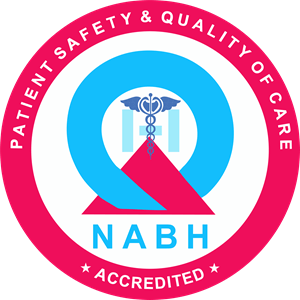What is Gonorrhea?
Gonorrhea, caused by the bacterium Neisseria gonorrhoeae, is a sexually transmitted infection (STI) that primarily affects the genital and reproductive tracts. With a long history dating back centuries, gonorrhea continues to be a significant global health concern. This bacterial infection spreads through unprotected sexual contact, including vaginal, anal, and oral intercourse. While it often manifests with mild or asymptomatic symptoms, untreated gonorrhea can lead to severe complications such as pelvic inflammatory disease, infertility, and an increased risk of HIV transmission. Awareness and understanding of this STI are crucial for effective prevention and management. In this comprehensive exploration, we will delve into the causes, symptoms, transmission, diagnosis, treatment options, and preventive measures associated with gonorrhea, providing a must-read resource for those seeking a well-rounded knowledge of this prevalent and potentially serious infection.
Types of Gonorrhea:
Gonorrhea in Different Parts of the Body:
- Genital Gonorrhea: It commonly affects the urethra in men and the cervix in women. Symptoms may include pain or burning during urination, genital discharge, and discomfort. This can lead to more severe complications like pelvic inflammatory disease (PID) in untreated cases.
- Anal Gonorrhea: Transmission through anal intercourse can result in infection of the rectum. Symptoms may include anal discharge, pain, and discomfort. Risk of complications such as proctitis and the potential for further spread if left untreated.
- Oral Gonorrhea: Transmission through oral sex can lead to throat infection (pharyngeal gonorrhea). It is often asymptomatic but can cause a sore throat, difficulty swallowing, and swollen lymph nodes.
- Ocular Gonorrhea: Rare, but possible through contact with infected genital fluids. It can cause eye infection (conjunctivitis) with symptoms like redness, discharge, and swelling.
Gonorrhea in Baby During Birth:
- Congenital Gonorrhea: Transmission from an infected mother to her baby during childbirth. It can result in eye infections (ophthalmia neonatorum), joint infections, and life-threatening systemic complications in the newborn.
- Ophthalmia Neonatorum: Gonococcal eye infection in newborns. Can lead to severe eye damage or blindness if not promptly treated with antibiotics.
Causes of Gonorrhea:
Gonorrhea is a sexually transmitted infection (STI) caused by the bacterium Neisseria gonorrhoeae. It can be transmitted through unprotected sexual intercourse (vaginal, anal, or oral) with an infected partner. Here are some key factors contributing to the transmission and causes of gonorrhea:
- Unprotected Sexual Activity: The primary mode of transmission is through unprotected sexual contact with an infected person. This includes vaginal, anal, and oral sex.
- Multiple Sexual Partners: Engaging in sexual activities with multiple partners increases the risk of exposure to gonorrhea and other STIs.
- Inconsistent or Improper Condom Use: Incorrect or inconsistent use of condoms during sexual intercourse can fail to provide adequate protection against gonorrhea and other STIs.
- Vertical Transmission: Pregnant women with gonorrhea can transmit the infection to their newborn during childbirth, leading to neonatal gonococcal infection. This can result in complications such as conjunctivitis (inflammation of the eye) or pneumonia in the newborn.
- Previous Gonorrhea Infection: Having had gonorrhea in the past does not provide immunity, and individuals can be re-infected if exposed to the bacterium again.
- Men Who Have Sex With Men (MSM): Men who have sex with men are at an increased risk of gonorrhea, particularly when engaging in unprotected anal intercourse.
- Younger Age Groups: Adolescents and young adults are at a higher risk of contracting gonorrhea compared to older age groups, possibly due to increased sexual activity and risk-taking behaviors.
Symptoms of Gonorrhea:
Gonorrhea can manifest with a range of symptoms, although it’s important to note that some individuals may be asymptomatic, meaning they do not show any noticeable signs. When symptoms are present, they can vary between men and women. Additionally, symptoms can appear within a few days to a couple of weeks after exposure. Here are the common symptoms associated with gonorrhea:
- Symptoms in Men:
- Painful Urination: Discomfort or a burning sensation during urination.
- Discharge from the Penis: Thick, white, yellow, or green discharge from the penis.
- Swollen or Tender Testicles: In some cases, inflammation and pain in the testicles may occur.
- Symptoms in Women:
- Painful Urination: Similar to men, women may experience discomfort or a burning sensation during urination.
- Increased Vaginal Discharge: Abnormal vaginal discharge that may be yellowish or greenish in color.
- Vaginal Bleeding Between Periods: Irregular bleeding between menstrual periods.
- Pelvic Pain: Pain or discomfort in the pelvic area, which may be mild or severe.
- Symptoms in Both Men and Women:
- Sore Throat: Gonorrhea can infect the throat through oral sex, leading to a sore throat.
- Rectal Discharge or Itching: If the infection occurs in the rectum (from anal sex), it can cause discharge, itching, or discomfort.
- Swollen Lymph Nodes: Enlarged lymph nodes, particularly in the groin area.
- Asymptomatic Infections:
- Many individuals infected with gonorrhea may not show any symptoms. As a result, they may unknowingly transmit the infection to their sexual partners. Regular testing and screening for STIs are crucial, especially for those engaging in high-risk sexual behavior.
Diagnosis of Gonorrhea:
Diagnosing gonorrhea typically involves a combination of clinical evaluation, laboratory testing, and, in some cases, partner notification and testing. Here are the common methods used for the diagnosis of gonorrhea:
- Clinical Examination:
- Medical History: Healthcare providers may inquire about sexual activity, symptoms, and potential risk factors.
- Physical Examination: A physical examination may be conducted to check for signs of infection, such as discharge, inflammation, or swelling.
- Laboratory Testing:
- Nucleic Acid Amplification Test (NAAT): This is the most common and sensitive method for diagnosing gonorrhea. It involves detecting the genetic material (DNA or RNA) of Neisseria gonorrhoeae. Samples can be collected from various sites, including urine, genital swabs (urethral, cervical, or vaginal), rectal swabs, or throat swabs, depending on the potential exposure.
- Culture: Gonorrhea can also be cultured in the laboratory, but this method is less commonly used due to its lower sensitivity and longer time for results. It may be reserved for cases where NAAT is not available or in certain clinical situations.
- Testing for Other STIs: Since individuals with gonorrhea may also be at risk for other sexually transmitted infections, healthcare providers often recommend testing for other STIs, including chlamydia, syphilis, and HIV.
- Partner Notification and Testing:
- Contact Tracing: If a person is diagnosed with gonorrhea, healthcare providers may discuss partner notification and encourage the individual to inform their recent sexual partners about the diagnosis. Partners may then be advised to seek testing and treatment.
You Can read also: Depression: Causes, Symptoms, Types, Risk Factors & Treatment
Complications of Gonorrhea:
Gonorrhea, when left untreated or not promptly treated, can lead to various complications, affecting both men and women. Complications can arise due to the spread of the infection to other parts of the body or the development of related conditions. Some common complications of gonorrhea include:
- Pelvic Inflammatory Disease (PID): In Women, if gonorrhea remains untreated can ascend through the reproductive tract, causing inflammation of the uterus, fallopian tubes, and ovaries. PID can lead to chronic pelvic pain, ectopic pregnancy, and infertility.
- Ectopic Pregnancy: PID resulting from untreated gonorrhea increases the risk of ectopic pregnancy in women, where a fertilized egg implants outside the uterus, typically in the fallopian tubes.
- Infertility: In both men and women untreated gonorrhea can lead to scarring and damage to the reproductive organs, increasing the risk of infertility in both men and women.
- Epididymitis: Gonorrhea can cause inflammation of the epididymis in men, the tube that carries sperm from the testicles. This can lead to pain, swelling, and, in severe cases, infertility.
- Disseminated Gonococcal Infection (DGI): In rare cases, the bacteria can enter the bloodstream, leading to a disseminated gonococcal infection. This can affect multiple organs, causing symptoms such as joint pain, skin lesions, and fever.
- Increased HIV Transmission Risk: In both men and women, Individuals with gonorrhea are at an increased risk of acquiring or transmitting HIV if exposed to the virus.
- Complications in Pregnant Women: Gonorrhea can cause complications during pregnancy, such as premature birth, low birth weight, and transmission of the infection to the newborn during childbirth.
Treatment of Gonorrhea:
The treatment of gonorrhea involves the use of antibiotics to eliminate the Neisseria gonorrhoeae bacteria responsible for the infection. However, due to the increasing prevalence of antibiotic-resistant strains, healthcare providers may need to adjust treatment regimens based on local resistance patterns.
Commonly used antibiotics for gonorrhea treatment include:
- Ceftriaxone: This antibiotic is often administered as an injection. Ceftriaxone is effective against most strains of gonorrhea and is a key component of recommended treatment regimens.
- Azithromycin or Doxycycline: These antibiotics are often prescribed in addition to ceftriaxone to provide dual therapy. Dual therapy is recommended to improve effectiveness and reduce the risk of antibiotic resistance.
Babies who develop gonorrhea after being born to someone with the infection can be treated with antibiotics.
It’s crucial to complete the full course of antibiotics as prescribed, even if symptoms improve before the medication is finished. Failure to complete the entire course may contribute to the development of antibiotic resistance.
You Can read also: Personal Hygiene Tips for Hair, Skin and Body Parts
Prevention from Gonorrhea:
Preventing gonorrhea involves adopting safe sexual practices and taking proactive measures to reduce the risk of infection. Here are key strategies for preventing gonorrhea:
- Abstinence or Mutual Monogamy: Abstaining from sexual activity is the most effective way to prevent gonorrhea. Alternatively, being in a mutually monogamous relationship with a partner who has been tested and is free of sexually transmitted infections (STIs) can also reduce the risk.
- Consistent and Correct Condom Use: Proper and consistent use of latex or polyurethane condoms can significantly reduce the risk of gonorrhea transmission. Condoms should be used during every sexual encounter, including vaginal, anal, and oral sex.
- Regular STI Testing: Individuals engaging in sexual activity, particularly those with multiple partners or engaging in high-risk behavior, should undergo regular testing for STIs, including gonorrhea. Early detection allows for prompt treatment and reduces the risk of complications.
- Communication with Partners: Open and honest communication with sexual partners is crucial. Discussing sexual histories, STI testing, and using protection can help both individuals make informed decisions and reduce the risk of transmission.
- Vaccination: While there is currently no vaccine specifically for gonorrhea, staying up-to-date with vaccinations for other preventable infections, such as human papillomavirus (HPV) and hepatitis B, can contribute to overall sexual health.
- Pre-Exposure Prophylaxis (PrEP) for HIV: PrEP is a preventive medication for individuals at high risk of HIV infection. While it does not protect against gonorrhea, using PrEP in combination with other preventive measures can address multiple risks associated with sexual health.
- Avoiding High-Risk Behaviors: Engaging in high-risk sexual behaviors, such as having multiple partners without protection, increases the likelihood of gonorrhea and other STIs. Avoiding these behaviors can help reduce the risk of infection.





















 Disclaimer: The information on the Web Site is provided for informational purposes only and is not meant to substitute the advice provided by our doctor or other health care professional. You should not use the information available on or through the Web Site for treating a health problem or disease or prescribing any medication. All images used on this website are for illustrative purposes only,
Disclaimer: The information on the Web Site is provided for informational purposes only and is not meant to substitute the advice provided by our doctor or other health care professional. You should not use the information available on or through the Web Site for treating a health problem or disease or prescribing any medication. All images used on this website are for illustrative purposes only,